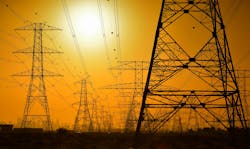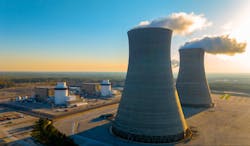Rising Electrical Demand Will Force Boiler Industry Transition
By ED VERDEROSE, Vice President, Industrial Steam Boiler USA
So, I walked over to the light switch today and when I flipped it up, the room was illuminated.
It was a little chilly, so I pushed the thermostat up a few clicks and the room got warmer. These things I take for granted, but in today’s “climate” of Regulatory Compliance and Races to Zero Emissions, there are many more facets I know we have to consider.
Currently, we’re not suffering from regular black- or brown-outs and for the most part, we’re not short on fossil fuels, though we do understand their limitations and tradeoffs. The image that comes to mind is the scene from any dystopian narrative that paints the world without the energy of today. Dark factories, grey skies, you get the idea, we had the chance to make a difference and missed it.
So, how is it, exactly, that we’re going to power our planet’s future?
It isn’t the coal-fired power plants of yesterday, because we haven’t built one in years. And the ones that are still in operation only represent about 16% of the total consumption of the U.S. market. At the same time, coal-fired electrical generation continues to provide 73% of India’s and 58% of China’s consumption. So, as we continue to share the same ozone, it is safe to say that electricity, its generation and consumption, is of worldwide concern.
Meanwhile, the construction of data centers is at an all-time high, with no slowing in sight, and these creatures devour power like a shark on a feeding frenzy. The U.S. has the highest number of data centers in the world, roughly 5,000. The large/hyperscale units, alone, gobbled nearly 5% of the total produced electricity in 2023, with expectations of consumption to more than double by 2030.
Of course, this does not take into consideration your home’s toaster.
Wind, solar and hydropower account for only about 20% of total electrical production in the U.S. Natural gas weighs in at 42% and nuclear power picks up the remaining 18%. If you’re doing the math along with me, you’ll see that, in order to minimize our carbon footprint, reduce greenhouse gases (GHGs) and save the planet for future generations, we have to strategically convert from the long transmission lines required to get fossil, wind and solar renewables (from where they’re made to where they’re consumed) to nuclear and localized “micro grids” over time.
Small Nuclear Reactors (SMR’s), the small referring to both their respective size and generating capacity, are available in the 20 to 300 MW(MWe) size and can be stacked modularly for scalability and redundancy. There are units currently operating in Russia and China, with 74 new projects in development worldwide. The U.S. Navy has powered submarines and aircraft carriers this way since 1955. So, with commercial nuclear power generation dating back to the late 1950’s, it is safe and predictable.
The latest addition to our country's large-scale nuclear power plants came online in 2023 and 2024 in Georgia at the Alvin W. Vogtle Electric Generating Plant, representing the first new U.S. nuclear plant in 30 years.
Very well-known are the many consumers of electricity. I remember Dad reminding us to “turn off the lights” or Grandmom warning “not to waste a hot oven.” (The related smells and deliciousness are hard to forget.) What many may not know about are hot water and steam-generating boilers.
These pieces of equipment have traditionally been fossil fuel-fired and are used in the production of literally everything from comfort heating and humidification to food, beverages, textiles, and tires, and the list goes on.
But fossil fuel-fired boilers can rarely exceed 90% efficiency, most landing in the mid- 80% range, the remainder being lost to the stack exhaust. When fired electrically, however, these boilers become effectively 100% efficient, transferring their energy entirely from the power they consume to the steam or hot water that they produce.
Of course, the electrical power required to operate these boilers is significant, in both voltage and amperage, remaining a barrier to entry for many manufacturers and users who, otherwise, would like to do their part in helping to green the world. Thermal Leverage LLC, with its Tri-Fuel Boiler (see above), is one of manufacturers who understands that. But until significant changes are made to our electrical distribution system, the boilers that are required for the heating and production needs of this nation will continue to require fossil fuel capabilities.
The idea behind incorporating the conventional boiler burner with matching heat input electrodes encompasses the bridge-building ideology that allows a client to replace their boilers now or install new equipment that has this immediate electrical conversion capability. And, yes, because the burner is not integral to the boilers design, it may also be specified for the use of biofuels and hydrogen.
So, as soon as the optimistic inevitable occurs, not only plentiful but inexpensive electricity and hydrogen will become available. But they also can and will be available to be used in these UL-listed full capacity generators without retrofit or alteration.
The conversion then should be as easy as flipping a switch.
#####
Based in the Greater Philadelphia Area, the author is VP of Business Development at Industrial Steam Boiler USA. He also has served as a member of the Board of Directors at the American Boiler Manufacturers Association (ABMA) and is currently on the Advisory Committee to the Board of Trustees for The National Board of Boiler and Pressure Vessel Inspectors (NBBI). He can be reached at [email protected].


